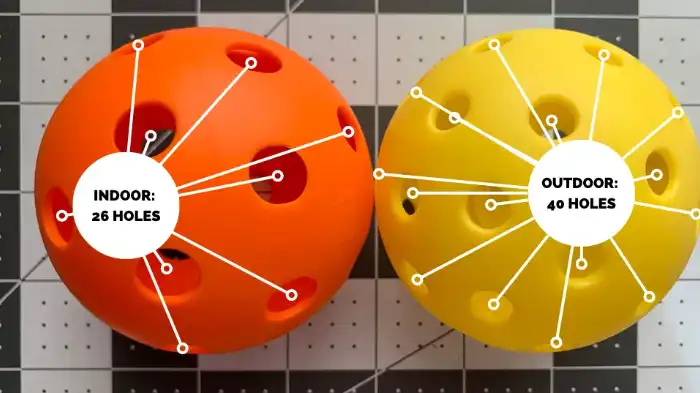Pickleball, a popular racquet sport, has gained immense popularity in recent years due to its fast pace and accessibility for people of all ages. Although it shares similarities with tennis and badminton, there are certain aspects unique to pickleball that often pique people’s curiosity. One common question that arises is, “How many holes are in a pickleball?” In this article, we shall delve into the structure and design of a pickleball and determine the number of holes present within it.
The Anatomy of a Pickleball
Pickleballs are small, plastic balls with a diameter of 2.87 inches and a weight of approximately 0.9 ounces. Typically, a pickleball consists of two main components: the outer shell and the interior structure.

The Outer Shell
The outer shell of a pickleball is made of a durable plastic material. This shell is composed of two halves that are fused together during the manufacturing process. The outer design generally features a pattern of circular holes spread across the ball’s surface, resembling a honeycomb or waffle pattern.
The Interior Structure
Beneath the outer shell lies the interior structure of a pickleball. This part consists of several smaller components that impact the ball’s performance. There are typically several layers within the pickleball, including a cushioning layer and a reinforcing layer. However, it is important to note that these layers do not influence the number of holes on the surface.
How Many Holes Are in a Pickleball?
Now, let’s answer the burning question: How Many Holes Are in a Pickleball? A standard pickleball has an average of 26 holes on its surface. However, it is important to keep in mind that the number of holes can vary slightly depending on the manufacturer or the specific model of the ball.
The Purpose of Holes
The holes on a pickleball serve multiple purposes during gameplay. Firstly, they help to reduce the ball’s speed, making it easier for players to control and return shots. The holes also contribute to the ball’s durability by reducing wind resistance, which prevents it from deforming or losing shape during fast-paced rallies. Additionally, the holes promote a consistent bounce, as they allow air to escape and prevent excessive pressure buildup inside the ball.

The Distribution of Holes
The holes on a pickleball are evenly distributed across its surface. This distribution ensures that the ball’s weight remains balanced, creating a more predictable and reliable flight path. The strategic placement of the holes also assists players in achieving accurate spins and enhances the ball’s aerodynamic properties.
Conclusion
Pickleballs are fascinating sports equipment, and understanding their composition adds another layer of appreciation for the game. But the question arises is that, How Many Holes Are in a Pickleball? With an average of 26 holes spread across its surface, a pickleball provides the perfect balance of control, durability, and performance.
These holes serve an essential purpose in ensuring consistent flight and bounce characteristics during intense matches. So, the next time you hit the pickleball court, you’ll have a deeper understanding of the intricacies behind this beloved sport. Keep enjoying pickleball and honing your skills!
Frequently Asked Questions
The standard pickleball has 26 precisely drilled holes, providing optimal aerodynamics and balance during play.
The holes in a pickleball are designed strategically to reduce the ball’s speed and enhance control. These perforations also reduce wind resistance and allow for a consistent bounce.
Yes, all regulation pickleballs sport 26 holes. This standardization ensures fair play across tournaments and casual games and guarantees a consistent playing experience for players of all levels.
No, the holes on a pickleball are meticulously drilled to withstand the impacts and wear and tear of intense gameplay. Quality pickleballs are made with resilient materials, ensuring their longevity and durability even with repeated use.
The number of holes in a pickleball directly affects its flight characteristics and responsiveness. The perfectly drilled holes enable players to execute different shots, including spins and control, making the game more exciting and challenging.

